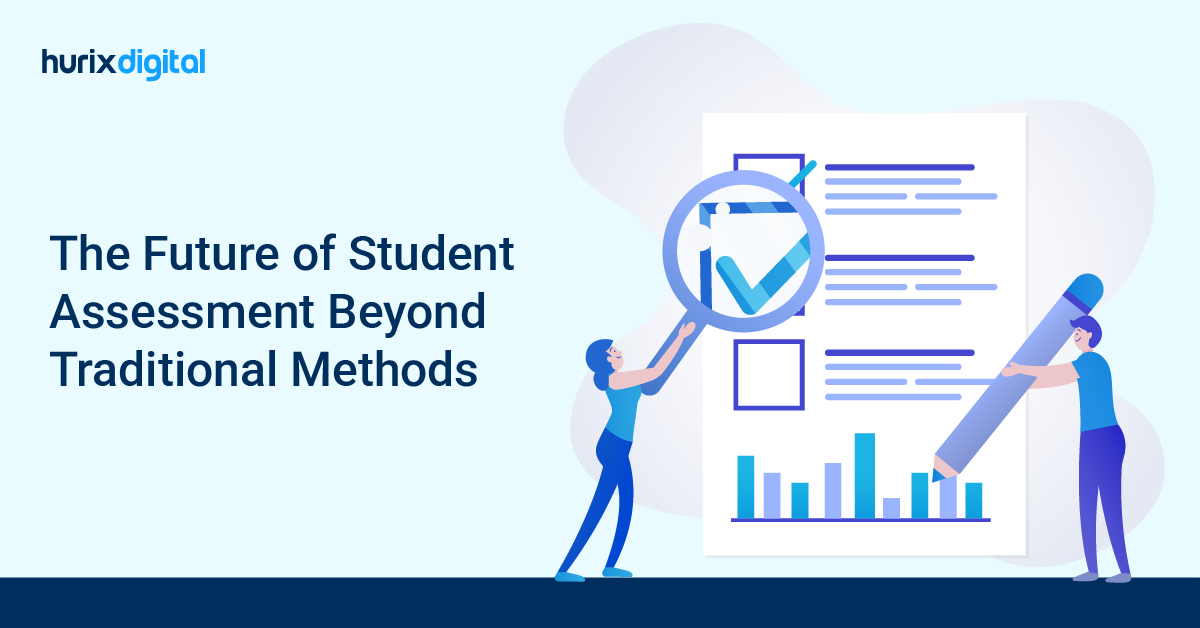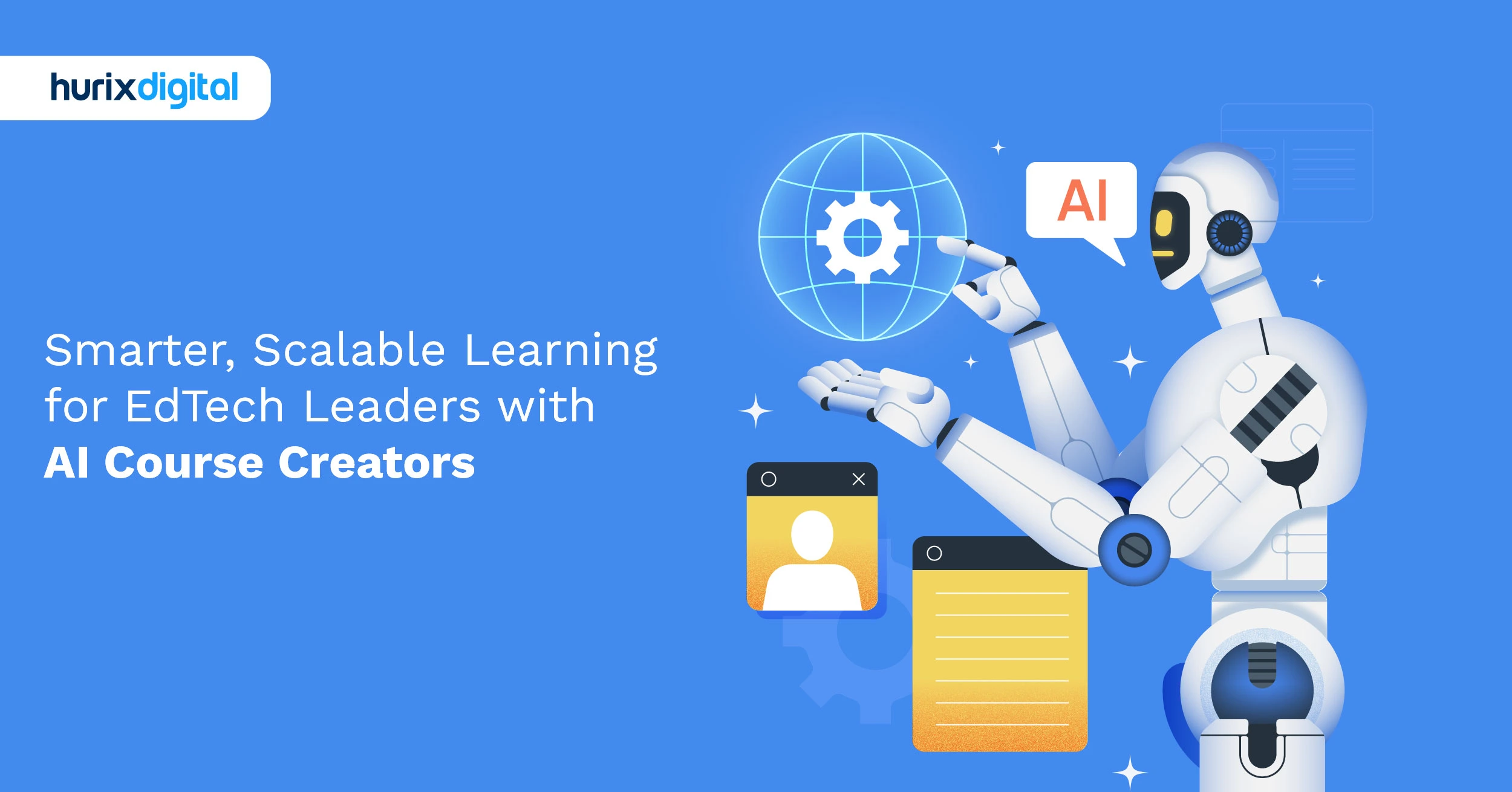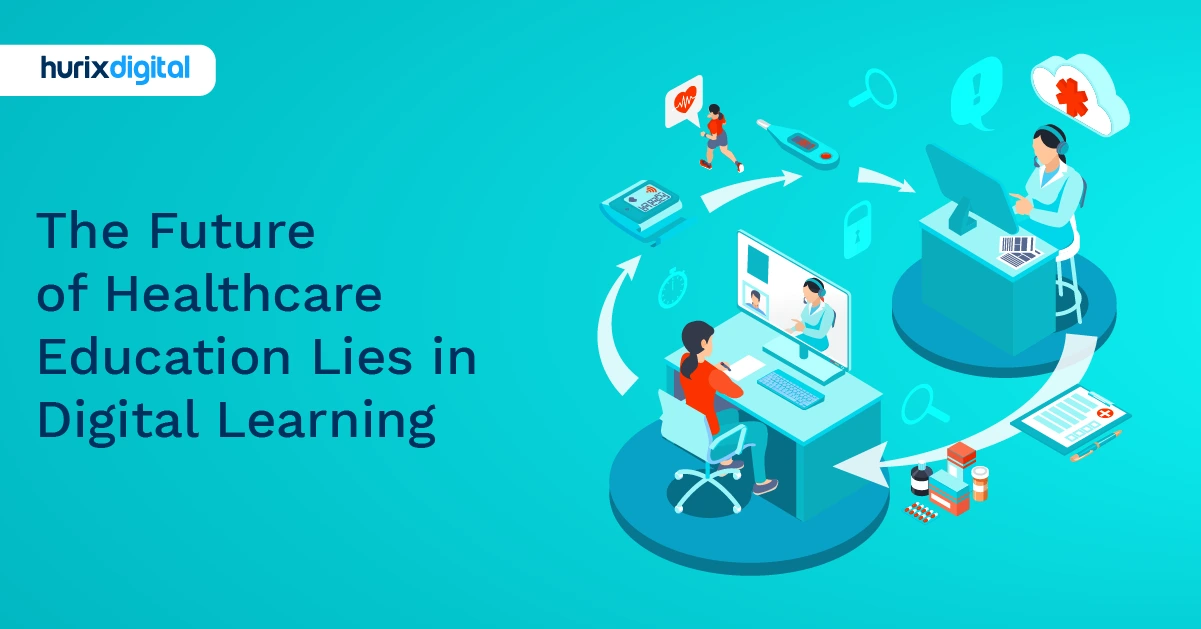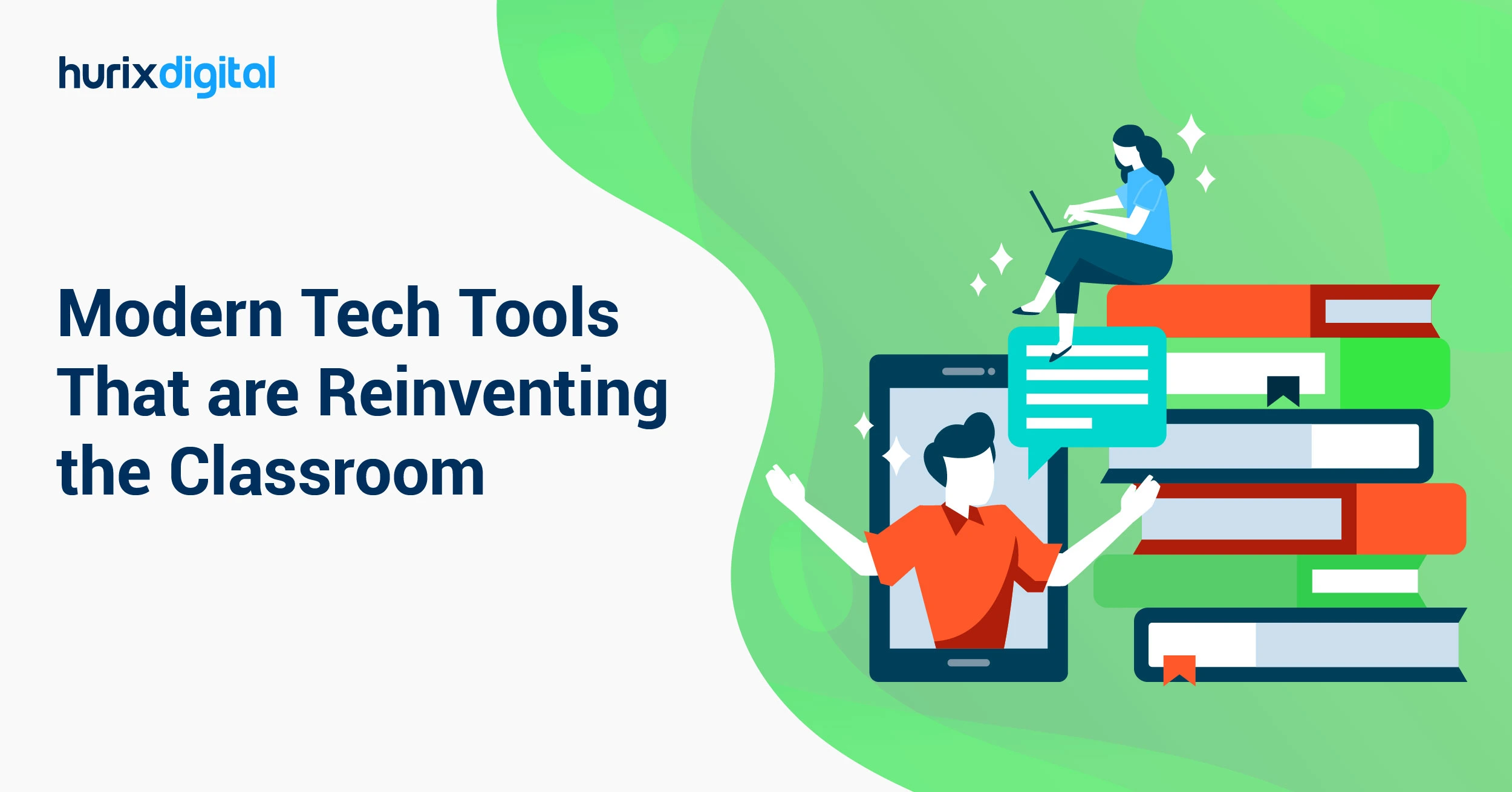
Modern Tech Tools That are Reinventing the Classroom
Summarize with:
As technology integration gains importance, the divide between those with access to useful tools and those without access widens. With a predicted CAGR of 13.4% from 2024 to 2030, the global education technology market, valued at $142.37 billion in 2023, is expected to rise substantially. However, this growth raises concerns about equitable access.
Equity gaps in higher education manifest as inequalities in achievement and opportunities across diverse demographics, including race, socioeconomic status, and geographic location. These disparities are evident in access to resources, academic success rates, and post-graduation outcomes.
The pursuit of achieving educational fairness, guaranteeing that every student can access high-quality learning chances, continues to be a daunting hurdle. However, advancements in educational technology show potential for narrowing this equity gap.
The article highlights the importance of using technology to address the ongoing digital divide in higher education, stressing the need for strategic planning to achieve fair access and positive learning outcomes.
Table of Contents:
- Technology in Education – An Overview
- The Role of EdTech in Bridging the Equity Gap
- Challenges and Considerations
- Strategies for Equitable EdTech Implementation
- What is the Importance of Collaborating with the Top EdTech Companies?
- What are the 3 Collaboration Strategies with Top Education Tech Companies?
- How to Choose an Education Software Company for Your EdTech Procurement?
- What are the Top 5 Education Software Companies for Administrators?
- The Bottom Line
Technology in Education – An Overview
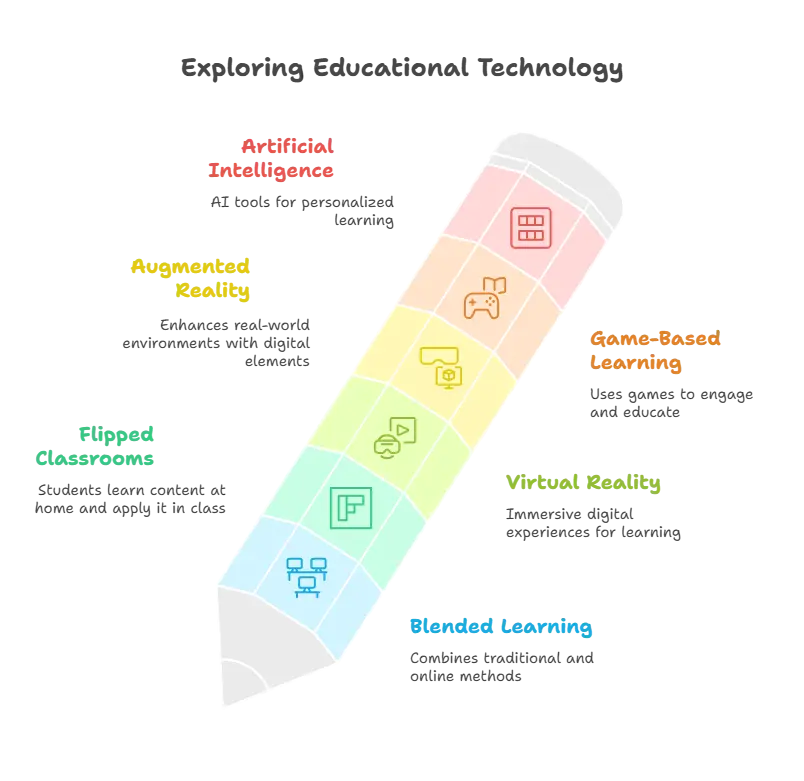
The world is changing at a faster pace, and students need to be up-to-date with every new technology. Even students from the elementary level are acquainted with technology, as should the teachers who teach them. There are many ways technology can be integrated into curriculum design.
Here is how the latest technology in education is changing how teachers teach:
1. Blended Learning
This advanced form of online learning combines traditional face-to-face instruction with virtual learning. With internet access, students can access lesson plans, assignments, and resources from home or any other location. This allows individuals to work on their schedules and complete assignments at their own pace.
Another critical feature of blended learning and interactive technology education is the capacity to make video recordings available for inspection at any moment during the course. This enables students to go back and study certain sections anytime they require further assistance or clarity.
Furthermore, interactive whiteboards let teachers keep track of where each student is in their lesson plan so they may provide focused feedback as necessary. Teachers can adjust their lessons to each student’s understanding and lack of understanding, which is crucial for helping all students succeed.
2. Flipped Classrooms
This educational technique allows students to watch pre-recorded lectures and other materials outside of class while the actual teaching and learning occur in the course. This technique was developed to improve learning effectiveness by reducing travel time and increasing hands-on learning time.
It is compatible with a variety of technologies, including video streaming sites like YouTube and digital textbooks. With the emergence of online learning platforms for higher education, such as Udemy, Khan Academy, and others, employing this strategy for high-quality higher education solutions has become easier. Further, partnering with learning solutions like Hurix Digital can streamline the transition for institutions wishing to employ online learning platforms.
3. Virtual Reality
Teachers can take their students on virtual field trips or give them real-life experiences without leaving the classroom. Students can use VR headsets to explore ancient ruins or outer space.
The experience is similar to watching a movie or playing a video game, except that learners only need the headset. Because VR headsets allow students to choose how much information they take in at once, they are an excellent way for professors to make lessons more engaging for students who struggle with traditional learning methods.
4. Augmented Reality
Augmented reality makes interactions in real-time more fun and enjoyable. With AR technology, you can walk around an object and see it from all angles. Any object’s hue or shape can also be altered.
This allows you to learn about 3D objects or locations without visiting them. Many schools are using augmented reality apps in their curriculum because they can assist pupils in visualizing subjects that may be difficult to grasp through textbooks alone.
For example, augmented reality software may allow students to experience what it would be like to be standing on Mars by superimposing images on their surroundings or allowing them to interact with objects in front of them – all while remaining in class!
5. Game-Based Learning
Learning through games is an excellent approach to engaging students with a variety of learning styles, interests, and skills. It also enables teachers to adjust their lectures to specific student needs, allowing them to personalize their lessons.
Games can be utilized as homework assignments or in-class activities during instructional time. Teachers can also assess student development and performance using game-based learning methods.
The fundamental goal of incorporating game-based learning into education is to make learning more enjoyable for students to retain information better than before while having fun learning. It would allow them to readily comprehend complex concepts through engaging games rather than dull lectures, which may discourage students from attending classes regularly.
6. Artificial Intelligence
AI can potentially improve education, from student assessment and tracking to personalizing courses for every student. AI in educational evaluation can be applied in a variety of ways.
Teachers frequently mark hundreds of papers, exercises, and tests at once, making it difficult to give each student personalized attention during class. AI systems can assist teachers by making recommendations and automating grading.
The Role of EdTech in Bridging the Equity Gap

EdTech solutions have the potential to revolutionize education by:
1. Accessibility and Affordability
EdTech platforms extend cost-effective and adaptable learning alternatives accessible anytime and from any location. Online learning accessibility dismantles obstacles to education, especially for students limited by their location or financial situation.
Online classes, digital textbooks, and mobile learning applications empower students in underserved communities with limited access to traditional resources.
EdTech solutions can overcome regional restrictions and provide quality education regardless of location. Online learning platforms, digital content, and mobile applications can extend learning beyond conventional classroom settings.
2. Personalized Learning
Education policies that follow a “one-size-fits-all” model frequently make equity inequalities worse by ignoring each student’s particular requirements and learning preferences.
EdTech solutions utilize artificial intelligence and data analytics to provide individualized learning experiences that cater to each student’s skills, interests, and preferences. Regardless of a student’s background or past academic achievement, EdTech supports academic success and engagement by meeting their unique learning needs.
3. Closing the Achievement Gap
EdTech interventions demonstrably aid in closing the achievement gap by extending targeted support to struggling students. Adaptive learning platforms, virtual tutoring programs, and gamified modules facilitate early identification of at-risk students and equip them with resources to succeed.
Challenge-based gamification strategies outperform traditional lectures, leading to an impressive 89.45% increase in learning outcomes. Gamification, simulations, and multimedia resources can spark curiosity and motivate students who struggle in traditional settings. Addressing learning gaps promptly allows EdTech to level the playing field and ensures that all students have the opportunity to maximize their potential.
4. Cultivating Inclusive Learning Environments
Despite an estimated 240 million children with disabilities globally, these individuals are often marginalized in education policy. This exclusion limits their access to education and hinders their full participation in social, economic, and political spheres.
Alarmingly, children with disabilities have some of the highest out-of-school rates worldwide. Persistent barriers rooted in discrimination, societal stigma, and a systemic failure to integrate disability considerations into education services continue to pose significant challenges.
Digital learning tools can bridge the educational gap for children with disabilities by providing alternative learning methods and promoting diversity, cultural competence, and collaboration across student backgrounds.
Through virtual reality simulations, online discussion forums, and collaborative project-based learning platforms, students can participate actively, exchange viewpoints, and cultivate an understanding of others’ situations. Adopting inclusive education technology can facilitate a welcoming and empowering learning environment where all students feel valued.
5. Data-Driven Instruction
Teachers previously relied on data points, such as exam results and class attendance, to gauge students’ comprehension. EdTech systems can monitor student development in real-time, spot at-risk pupils early on, flag areas of difficulty, and enable instructors to intervene before issues snowball. This makes it possible to provide focused assistance, including customized study schedules or referrals to online tutoring services.
In the classroom, data analytics technology in education highlights hidden learning gaps that could go undiscovered in more conventional settings. For instance, an adaptive learning platform can tell if a student is struggling with a specific concept within a broader topic. Educators can adjust their method, for example, by providing additional practice exercises or alternative explanations based on the student’s preferred method of learning based on this.
Challenges and Considerations

Despite the significant education technology benefits, it is vital to recognize some possible obstacles:
1. Digital Divide
Unequal technology access and unreliable internet connectivity can exacerbate pre-existing educational gaps. Therefore, it is imperative to make efforts to close the digital gap for fair access to EdTech solutions.
2. Training and Assistance for Teachers
Teachers must continue professional development to integrate technology effectively. They must receive training on how to use EdTech resources effectively to improve student learning outcomes.
3. Cost and Sustainability
Implementing EdTech solutions may incur hardware, software, and continuing maintenance expenses. Sustainable funding models can ensure long-term access to these technologies.
Strategies for Equitable EdTech Implementation
Institutions must implement a comprehensive strategy to leverage EdTech for educational equity. It includes:
- Requirement Analysis: To customize EdTech projects, it is essential to conduct a comprehensive evaluation of the particular equity issues and deficiencies.
- Stakeholder Engagement: Involving faculty, administrators, students, and community partners in stakeholder engagement helps to ensure that EdTech is by its priorities.
- Professional Development: Improving faculty and staff digital literacy and cultural competence boosts effective technology integration in professional development.
- Equity-Centered Design: Embracing an equity-centered design approach emphasizes the distinct requirements of marginalized communities.
- Data-Driven Evaluation: Continual monitoring and evaluation using data helps refine EdTech interventions for better impact.
Check out EXCLUSIVE: Hurix Digital Develops 100 Interactive Learning Programs for a Leading US-Based Education Institution in Just a Year
What is the Importance of Collaborating with the Top EdTech Companies?
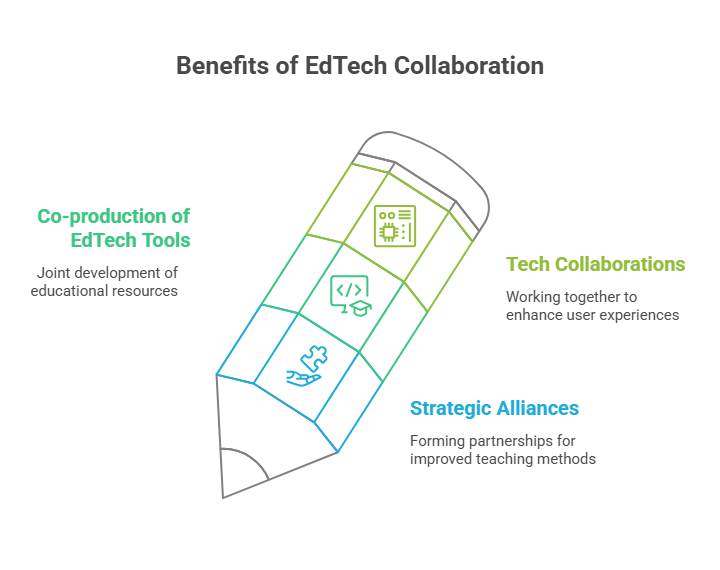
A wide range of businesses are collaborating with EdTech companies to increase their prospects of profits, making significant impacts in innovation strategies and building brand value.
Below are points that highlight the importance of collaborating with top EdTech companies in today’s landscape:
1. Strategic Alliances for Better Pedagogical Outcomes
Strategic alliances are essential to the EdTech industry. They entail working together between two or more businesses to use one another’s advantages and provide mutually beneficial solutions.
For instance, a technological platform and content supplier can create a full online learning ecosystem. To provide better educational experiences, strategic collaborations frequently entail sharing resources, coordinated marketing initiatives, and partners’ expertise.
2. Co-production of EdTech Tools for Educational Institutes
Each co-production endeavor between EdTech companies and schools or colleges is unique. It can entail testing new or improved features while collaborating with an existing supplier on current solutions.
Teachers who have already used the product will be aware of its advantages and disadvantages and may already have clear suggestions for its development.
As an alternative, it may be beta testing a product, evaluating a solution before it’s released, or getting early access to expensive or free iterations of new technology—all of which can be rewarding experiences for both parties. EdTech companies could start from scratch and assist in the creation of an innovative approach to address an immediate need.
3. Tech Collaborations for Enhancing User Experiences
Integrating AI developers with education technology providers ensures a more personalized and engaging learning experience.
One way to take advantage of this partnership is to create intelligent tutoring systems (ITS), which use machine learning algorithms to evaluate student performance, adjust content, and offer relevant feedback.
Likewise, cooperative endeavors can yield chatbots or adaptive learning algorithms, perfect for tackling rising expenses, diversity among pupils, and shifting labor market requirements.
What are the 3 Collaboration Strategies with Top Education Tech Companies?

Here are a few basic tips and tricks to employ while building partnerships with top education tech companies:
1. Evaluate and Identify Key Partners
Seek out businesses or establishments that align with your principles and educational goals. Examine their histories and pinpoint areas in which their knowledge and specialization could enhance your ROI and vice versa.
Before entering into a partnership, assess the parent company’s market reputation and financial worth. It also entails getting to know the business by learning about its foundations, values, and ethics. By doing this, you can be confident that your business will continue in safety, on good terms, and with minimal inconvenience.
2. Build and Strengthen Meaningful Relationships
Make contact with reputed EdTech companies and begin establishing a rapport. Communication is the key to effective partnership building. Make sure you network and meet professionals in the EdTech industry and attend conferences, workshops, and industry forums.
Additionally, if you are an educational institute trying to implement new EdTech tools, sharing your expectations, requirements, and feedback with the partner EdTech Company will help foster a productive bond and accelerate potential outcomes.
3. Be Open to New Ideas and Innovations
Open chances to work together with partners on novel ideas and projects. Collaborating can facilitate the development of creative ideas that surpass individual efforts in terms of efficacy.
In co-development partnerships, two or more businesses work together to produce innovative educational services or products. Through this kind of arrangement, businesses can combine their knowledge, assets, and technological know-how to create novel solutions.
How to Choose an Education Software Company for Your EdTech Procurement?
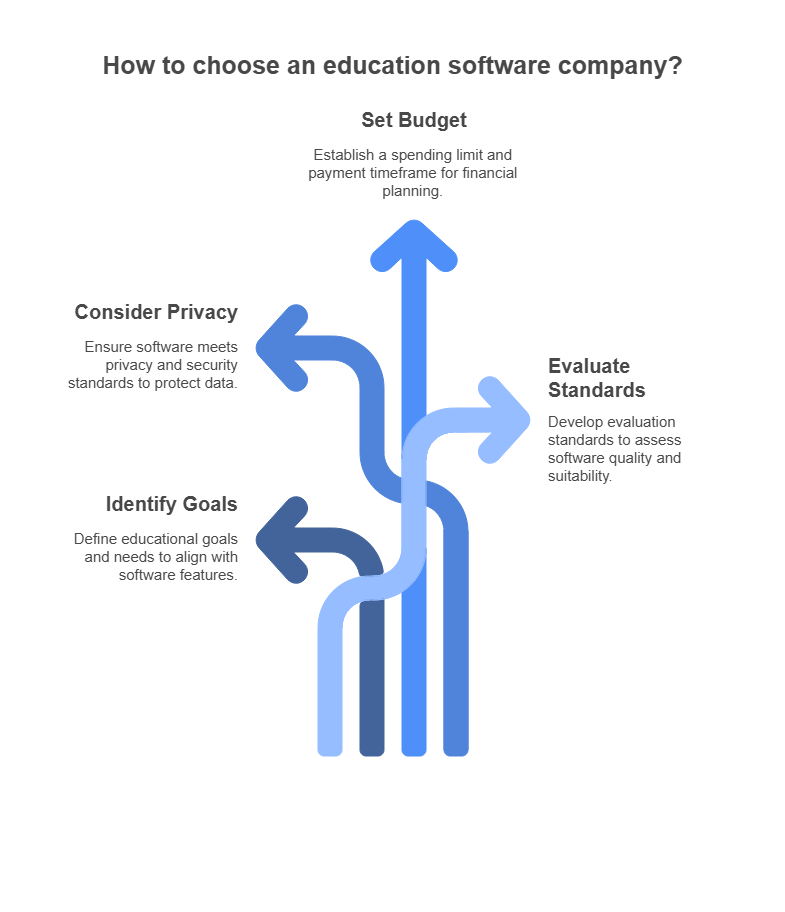
Selecting the ideal education software company for your EdTech procurement is a critical decision that requires careful consideration. With a plethora of options available, it can be overwhelming to discern which solution aligns best with your institution’s specific goals and objectives.
Here are a few tips you can consider when choosing the ideal solution:
1. Identify Your Educational Goals and Needs
Begin by outlining your institution’s educational objectives and the specific needs that the software should address. This could range from improving student engagement and enhancing learning outcomes to streamlining administrative tasks. It will help you narrow down the choices by focusing on software solutions that are tailored to meet these specific requirements.
2. Think About Privacy and Security
Verify that the technological options you are considering adhere to your organization’s security and privacy standards. This covers adhering to any rules or processes regarding the confidentiality and safety of data, as well as data protection laws and regulations.
3. Set a Spending Limit and Time Frame for Payment
Set aside money and schedules to purchase and install the education technology solutions. Consider the price of the actual solution as well as any required upgrades, continuing maintenance, and training and support.
A realistic budget and timetable should be established to guarantee a successful installation and long-term use of the solution.
4. Establish Education Software Evaluation Standards
Define evaluation standards to gauge the technology solution’s impact. This can entail developing particular measurements or indicators that align with your organization’s aims and objectives.
By doing this, you can ensure that the technology your school buys has the biggest possible impact on pupil achievement, educator effectiveness, and broader institutional success.
What are the Top 5 Education Software Companies for Administrators?
Below are some of the top education software companies you can consider when looking for advanced and reliable EdTech solutions for your institution:
1. Hurix Digital
Established in 2000, Hurix Digital, with its expansive global reach, stands at the forefront of the education technology landscape. It provides cloud platforms, content transformation, and future-ready learning content to enable businesses worldwide to meet their objectives.
Hurix guarantees the newest technological solutions to meet the demands of universities and institutions for higher education content. Following current trends, the curriculum content is planned and presented based on multiple engagement models and variables for personalized learning.
Education technology services offered by Hurix Digital:
- It offers robotic process automation to reduce repeated manual tasks and interventions with student-focused interaction.
- By incorporating game elements into user experience design, Hurix significantly boosts student engagement and participation, making learning more interactive and enjoyable.
- Hurix Digital provides an affordable and scalable Learning Management System (LMS) that caters to educational institutions’ diverse needs while maintaining high-quality standards.
- It helps you develop scenario-based videos for interactive learning. In a simulated setting, students can make choices and encounter scenarios that mimic actual life circumstances.
2. Oxagile
Founded in 2005, Oxagile is a US-based software development company.
With its education software solutions for eLearning resource producers, distributors, and certification agencies, Oxagile has been fascinating to students.
Their offerings are diverse and tailored to the specific needs of the education sector. This includes the development of mobile learning applications, white-label learning systems, and comprehensive Learning Management Systems (LMS).
Their approach is characterized by a flexible adaptation of EdTech expertise, combined with the ambition to set and achieve high goals, ensuring that their solutions not only meet but exceed the expectations of their clients in the educational sphere.
Education technology services offered by Oxagile:
- The current eLearning system makeover, which includes boosting efficiency, UI updates, and tech stack modernization
- New features like proctored tests, intelligent learning accounts, and personalized course recommendations
3. Chetu
Chetu was founded in 2000 and is functional across the US, UK, and India.
The eLearning software developers at Chetu can provide a range of education software solutions to educational institutions, universities, colleges, elementary schools, large enterprises, etc.
This software development company is a good choice for instructors seeking professionals with experience in WBT, SIS, or LMS development.
Education technology services offered by Chetu:
- Creation of personalized LMS solutions
- Software development for creating personalized content
- Creation of a customized student information system (SIS)
- Software for Personalised Web-Based Training (WBT) development
4. Matellio
Matellio began in 2014 with the US and India as its market bases.
Working with Matellio’s professionals can support corporate training, eLearning companies, schools, and universities with their EdTech procurement.
The group can create unique eLearning solutions as well as incorporate cutting-edge technology like chatbots with machine learning and features that enable immersive learning through AR and VR.
Education technology services offered by Matellio:
- Using chatbots with machine learning in eLearning initiatives
- Mobile app development for education
- Development of Web-based AR/VR solutions for education
- Creation of a training portal
5. Taazaa
Taazaa is listed among the top-rated educational software providers in India and the United States. Their primary area of competence is assisting businesses in creating digital solutions.
Taazaa offers every service related to software development projects, including development, validation, and maintenance.
The company provides services for DevOps and product modernization and dynamic product development teams. Taazaa’s services have been utilized by hundreds of corporations, including Fortune 500 firms, SMBs, and startups.
Education technology services offered by Taazaa:
- Learning Management System
- Apps for online and mobile learning
- Systems for corporate training
- Software for managing eLearning
The Bottom Line
Technology in education alone cannot solve the complex issue. However, edTech solutions can be an effective instrument for leveling the playing field in education if they are applied carefully and supported by focused initiatives. Implementing tech takes considerable thought to prevent aggravating already-existing disparities.
To handle unforeseen issues and guarantee that solutions stay accessible to varied student populations, regular evaluations and feedback systems are necessary. Higher education institutions may play a critical role in closing the equity gap and fostering inclusive learning environments for all students by utilizing edTech and evidence-based practices.
We, at Hurix Digital, believe that to fully realize the promise of educational technology, a multidimensional strategy centered on inclusivity, accessibility, and ongoing improvement is necessary. Our awareness of what today’s tech-savvy students require allows us to create content intended to be engaging, relevant, and accessible, ensuring all students have the opportunity to succeed.
Hurix Digital produces dynamic educational content in the forms of animations, simulations, and media formats to accommodate a range of learning methods. Contact us today to learn more.
Summarize with:

Vice President & SBU Head –
Delivery at Hurix Technology, based in Mumbai. With extensive experience leading delivery and technology teams, he excels at scaling operations, optimizing workflows, and ensuring top-tier service quality. Ravi drives cross-functional collaboration to deliver robust digital learning solutions and client satisfaction
 Upcoming Masterclass | Build an Army of Brand Evangelists using Training & Development | November 20th, 8:30 AM PDT | 11:30 AM EDT | 10:00 PM IST
Upcoming Masterclass | Build an Army of Brand Evangelists using Training & Development | November 20th, 8:30 AM PDT | 11:30 AM EDT | 10:00 PM IST

